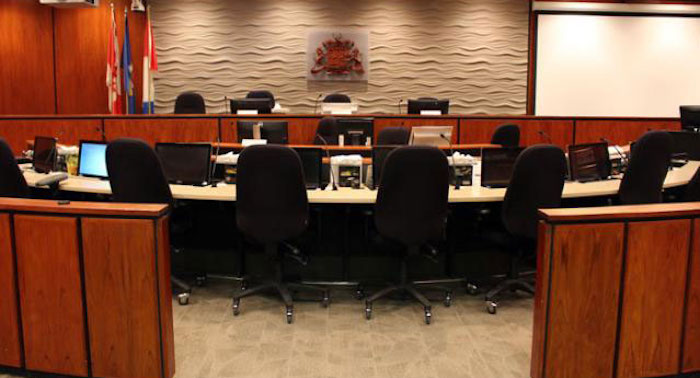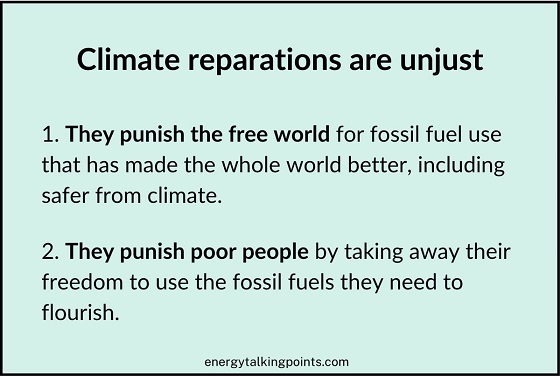Brownstone Institute
During the Crisis, Free Speech Worked Brilliantly
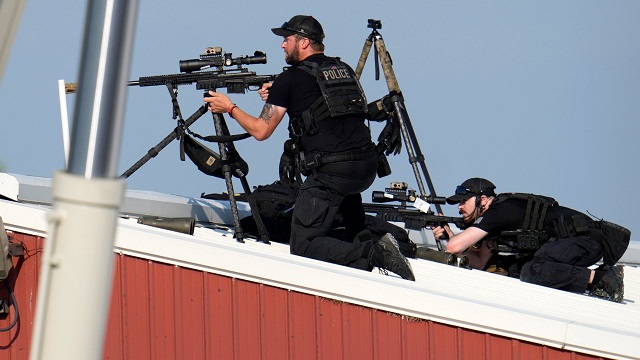
From the Brownstone Institute
The free platform proved itself capable of quick course correction alongside maximum agility in processing the floods of constant new information. Meanwhile, the venues in which “misformation” has been anathematized ended up being the major source of exactly that.
There is only one major social media platform that is relatively free of censorship. That is X, once known as Twitter, and owned by Elon Musk, who has preached free speech for years and sacrificed billions in advertising dollars in order to protect it. If we don’t have that, he says, we lose freedom itself. He also maintains that it is the best path to finding the truth.

The crisis that broke out after the attempt on Donald Trump’s life put the principle in motion. I was posting regular updates and never censored. I’m not aware of anyone who was. We were getting second-by-second updates in real time. The videos were flying along with every conceivable rumor, many false and then corrected, alongside free speech “spaces” in which everyone was sharing their views.
During this time, Facebook and its suite of services fell silent, consistent with the new ethos of all these platforms. The idea is to censor all speech until it is absolutely confirmed by officials and then permit only that which is consistent with the press releases.
This is the habit born of the Covid years, and it stuck. Now all the platforms avoid any news that is fast in motion, except to broadcast precisely what they are supposed to broadcast. Maybe that works in most times when people are not paying attention. Readers do not know what they are missing. The trouble was that during these post-shooting hours when nearly everyone on the planet wanted updates, there were no press releases forthcoming.
By habit, I reached for what was once called television. The networks had plenty of talking heads and newscasters with their usual eloquence. What was missing from all the broadcasts that I saw in these hours were any factual updates. They too were waiting for confirmation of this or that before putting out any information at all beyond the basics. They let their “experts” speak as long as possible just to waste time before rolling out new advertisements.
Over time, I realized something. X was driving the whole of the news, while the newscasters had to wait for permission before reading scripted lines.
Meanwhile, on X, the situation was utterly wild. Posts were flying fast and furious. New rumors would circulate (the shooter’s name and affiliations, stories about a second shooting, claims that Trump was hit in the chest, and so on). But shortly after the rumor circulated, so did the debunking. The feature called “Community Notes” kept the faulty news in check, while the truth gradually circulated to the top. This happened on topic after topic.
The wildest theories ever were permitted to appear, while others would debunk them with reasoned arguments. The readers could decide for themselves. You could see how the seeming chaos gradually organized itself into communities seeking verification. Posters grew ever more careful about posting claims that could not be verified, or at least explaining what they were.
X was single-handedly holding the whole of the corporate media to account, and reporters and editors very obviously came to depend on their X feeds to figure out what to say next. It was the same with newspapers. When NYT, CNN, WaPo, and so on would make major missteps, posters on X would call them out, the word would reach the editors, and the headline or story would change.
In the end, X became the one place where you could find the fullness of truth. All the while, the old-world media was dishing out the most ridiculous headlines one could imagine. For many hours, the New York Times, CNN, Washington Post, and other such venues refused to say it was an assassination attempt on Trump. The headline led people to believe that this was a MAGA rally with some random shooters that got carried away and so Trump had to be ushered out. This really did happen, and readers were outraged.
CNN was probably the worst offender, with the following headline: “Secret Service Rushes Trump Offstage As He Falls at Rally.”
It took many hours and repeated attempts but eventually the mainstream media finally said that the incident was “being investigated” as an assassination attempt, even though it was very obvious that it was an attempt on his life that he barely survived with the slight turn of his head.
It was the kind of flurry of nonsense that further discredited the old corporate media right there in front of an entire planet that was no longer believing anything they said.
It’s hard to know why the corporate press did this. Were they just cautious and worried about misinformation? If so, how come so many of their headlines were of the same sort, that which refused to say that someone just tried to kill Trump? Were they just in the habit of waiting for officials to tell them what to say? Was it raw TDS that was driving this? It’s hard to know but the failure was conspicuous and obvious to all.
What stood out above all else was the way free speech on X worked to ferret out the real story, while actually driving forward the mainstream press to correct its errors and get the story right. One shudders to think how it would have all taken place in absence of this one platform, which became the go-to place for everyone. The most important lesson: free speech worked. And beautifully.
All Western societies are currently struggling with the question of just how much speech to allow on the Internet. The trajectory for years now has not been a good one. Once-free platforms have become more frozen, more propagandistic, more staid, and duller, even as this one platform has created a culture of freedom combined with community-driven accountability.
This freedom accomplished exactly what it was supposed to accomplish, while the censored platforms held onto misinformation much longer than they should have been.
Which makes the point. Too often, the battle over free speech is framed as misinformation/freedom vs. facts/truth/restriction. The very opposite has proven to be the case. The free platform proved itself capable of quick course correction alongside maximum agility in processing the floods of constant new information. Meanwhile, the venues in which “misformation” has been anathematized ended up being the major source of exactly that.
Freedom works. As messy as it is, it works better than any other system. Meanwhile, governments of the world have targeted X for destruction. Advertisers continue to boycott and regulators continue to threaten.
So far, it has not worked and thank goodness. But for X, the last 24 hours would have looked very different: nothing but propaganda, apart from a few marginal places here and there. Therein lies another irony: the way X is managed is increasing trust rather than reducing it.
The lesson should be obvious. The answer to the problems of free speech is more of it.
Brownstone Institute
The Most Devastating Report So Far
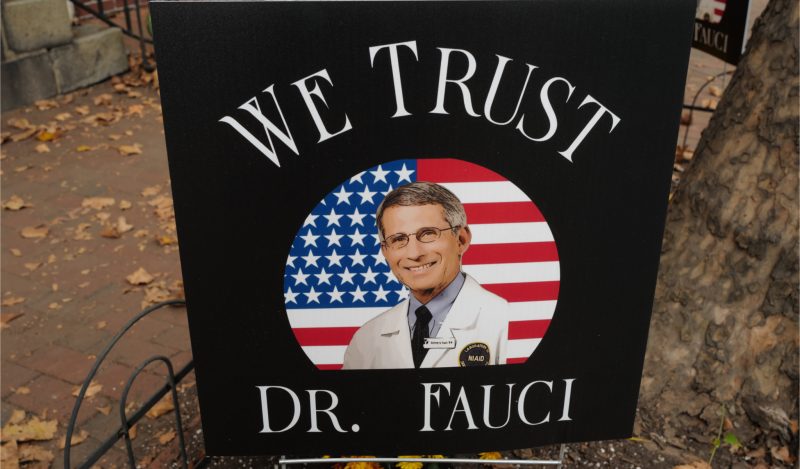
From the Brownstone Institute
By
The House report on HHS Covid propaganda is devastating. The Biden administration spent almost $1 billion to push falsehoods about Covid vaccines, boosters, and masks on the American people. If a pharma company had run the campaign, it would have been fined out of existence.
HHS engaged a PR firm, the Fors Marsh Group (FMG), for the propaganda campaign. The main goal was to increase Covid vax uptake. The strategy: 1. Exaggerate Covid mortality risk 2. Downplay the fact that there was no good evidence that the Covid vax stops transmission.
The propaganda campaign extended beyond vax uptake and included exaggerating mask efficacy and pushing for social distancing and school closures.
Ultimately, since the messaging did not match reality, the campaign collapsed public trust in public health.
The PR firm (FMG) drew most of its faulty science from the CDC’s “guidance,” which ignored the FDA’s findings on the vaccine’s limitations, as well as scientific findings from other countries that contradicted CDC groupthink.
The report details the CDC’s mask flip-flopping through the years. It’s especially infuriating to recall the CDC’s weird, anti-scientific, anti-human focus on masking toddlers with cloth masks into 2022.
President Biden’s Covid advisor Ashish K. Jha waited until Dec. 2022 (right after leaving government service) to tell the country that “[t]here is no study in the world that shows that masks work that well.” What took him so long?
In 2021, former CDC director, Rochelle Walensky rewrote CDC guidance on social distancing at the behest of the national teachers’ union, guaranteeing that schools would remain closed to in-person learning for many months.
During this period, the PR firm FMG put out ads telling parents that schools would close unless kids masked up, stayed away from friends, and got Covid-vaccinated.
In March 2021, even as the CDC told the American people that the vaxxed did not need to mask, the PR firm ran ads saying that masks were still needed, even for the vaxxed. “It’s not time to ease up” we were told, in the absence of evidence any of that did any good.
In 2021, to support the Biden/Harris administration’s push for vax mandates, the PR firm pushed the false idea that the vax stopped Covid transmission. When people started getting “breakthrough” infections, public trust in public health collapsed.
Later, when the FDA approved the vax for 12 to 15-year-old kids, the PR firm told parents that schools could open in fall 2021 only if they got their kids vaccinated. These ads never mentioned side effects like myocarditis due to the vax.
HHS has scrubbed the propaganda ads from this era from its web pages. It’s easy to see why. They are embarrassing. They tell kids, in effect, that they should treat other kids like biohazards unless they are vaccinated.
When the Delta variant arrived, the PR firm doubled down on fear-mongering, masking, and social distancing.
In September 2021, CDC director Walensky overruled the agency’s external experts to recommend the booster to all adults rather than just the elderly. The director’s action was “highly unusual” and went beyond the FDA’s approval of the booster for only the elderly.
The PR campaign and the CDC persistently overestimated the mortality risk of Covid infection in kids to scare parents into vaccinating their children with the Covid vax.
In Aug. 2021, the military imposed its Covid vax mandate, leading to 8,300 servicemen being discharged. Since 2023, the DOD has been trying to get the discharged servicemen to reenlist. What harm has been done to American national security by the vax mandate?
The Biden/Harris administration imposed the OSHA, CMS, and military vax mandates, even though the CDC knew that the Delta variant evaded vaccine immunity. The PR campaign studiously avoided informing Americans about waning vaccine efficacy in the face of variants.
The propaganda campaign hired celebrities and influencers to “persuade” children to get the Covid vax.
I think if a celebrity is paid to advertise a faulty product, that celebrity should be partially liable if the product harms some people.
In the absence of evidence, the propaganda campaign ran ads telling parents that the vaccine would prevent their kids from getting Long Covid.
With the collapse in public trust in the CDC, parents have begun to question all CDC advice. Predictably, the HHS propaganda campaign has led to a decline in the uptake of routine childhood vaccines.
The report makes several recommendations, including formally defining the CDC’s core mission to focus on disease prevention, forcing HHS propaganda to abide by the FDA’s product labeling rules, and revamping the process of evaluating vaccine safety.
Probably the most important recommendation: HHS should never again adopt a policy of silencing dissenting scientists in an attempt to create an illusion of consensus in favor of CDC groupthink.
You can find a copy of the full House report here. The HHS must take its findings seriously if there is any hope for public health to regain public.
Brownstone Institute
The Revolution of 2024: A Rare Victory for Anti-Establishment Fury
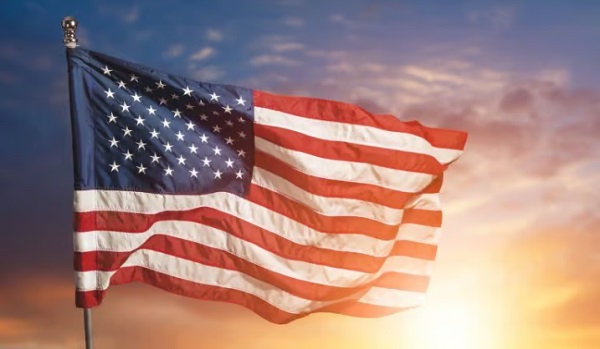
From the Brownstone Institute
By
The sudden coming together of three great sectors of anti-establishment fury – MAGA, MAHA, and DOGE – in the last two months of the election of 2024 is one for the ages.
People are out and about, smiling at each other. It’s been true since the morning after the election, the results of which defied every prediction. Who doesn’t like to see the smug elites who have ruled the world for five awful years taken down a peg?
More than that, there are hints of a return to sanity. Mainstream advertisers are suddenly returning to X, putting their economic interest above their tribalist loyalties. The editor of pro-lockdowns Scientific American, which had long blessed totalitarian measures as true science, has resigned.
The attempt to pillage InfoWars and give it to The Onion has been reversed by a federal judge. That might be a fluke or might not be: maybe the lawfare is dialing back too. The cabinet of the incoming administration is being filled by voices that were fully censored for years. Employees are reportedly packing their bags at the FDA and other agencies.
Mainstream news commentators are sputtering around with less bravado than they have shown in years. CNN is firing major personalities.
Trump is talking about abolishing the income tax and granting $10K in tax credits per homeschooled child, not to mention blowing up college accreditation systems, among other sweeping changes.
The American Bastille day is coming, not only freeing the political prisoners of January 6 but also many of the unjustly persecuted including Ross Ulbricht, Roger Ver, and Ian Freeman, among so many others. That will be a day of rejoicing.
Oh, and peace seems to have broken out in some contentious areas of the world, for now.
What is happening? This is not the usual transfer of the resident of the White House. This is starting to look like an actual transfer of power, not just from Biden to Trump but from the permanent government – ensconced in many sectors – that has been long in hiding to an entirely new form of government responsive to actual voters.
As it turns out, there was no late surge for Kamala Harris. All the polls were wrong, and the rest was media blather. What was correct were the betting odds on Polymarket, and only days later, the FBI raided the 26-year-old founder’s home and confiscated his phone and laptop.
There are still many millions of missing voters, people who supposedly showed up for Biden in 2020 but stayed home this time. Meanwhile, there has been a historic shift in all races, ethnicities, and regions, with even the possibility of flipping California from blue to red in the future.
After decades of academic slicing and dicing of the population according to ever more eccentric identity buckets involving race, ethnicity, gender, and sexual interest, along with countless thousands of studies documenting deep complexity over intersectionality, the driving force of the election was simple: class, and the few intellectuals and some wealthy entrepreneurs who understand that.
The division was not really left vs right. It was workers vs laptoppers, wage earners vs six-figure stay-at-homers, bottom half vs top 5 percent, people with actual skills vs weaponized resume wielders, and those with affection for old-world values vs those whose educations have beaten it out of them for purposes of career advancement.
The silent majority has never been so suddenly loud. It just so happened that the heavily privileged had come to inhabit easily identifiable sectors of American society and, in the end, had no choice but hitch the whole of the overclass wagon to the fortunes of a candidate like themselves (Kamala) but who was unable to pull off a compelling masquerade. Not even a parade of well-paid celebrity endorsements could save her from total rebuke at the polls.
Sylvester Stallone called Trump a second George Washington but another reference point might be Andrew Jackson. The overwhelming victory for Trump is on a scale not seen since 1828 when, four years after the presidency was stolen from Jackson, Old Hickory came back in a wild landslide and cleaned up Washington. Trump arrives in Washington with a mandate for the same, with 81% of the public demanding that the government shrink in size and power.
It has all happened so quickly. We are barely ten days into the realization of what just transpired and the entire lay of the land seems different, like a tectonic shift in politics, culture, mood, and possibilities. We are even seeing blunt and open talk about the horrendous Covid response that so utterly demoralized the country and the world, after years of silence on the topic. We have promised hearings coming, and court cases galore now on fast track.
The sudden coming together of three great sectors of anti-establishment fury – MAGA, MAHA, and DOGE – in the last two months of the election of 2024 is one for the ages. It provides the beginnings of an answer to the great question on our minds for decades: how precisely does an authentic revolution take root in an industrialized Western democracy? Are elections capable of delivering real results?
For now, the answer seems to be yes. That should thrill any responsible observer of social, cultural, economic, and political affairs. It means that the early architects of the American system were not wrong. The intolerable costs of political upheaval of ages past can be mitigated by planting power firmly in the hands of the people through the plebiscite. This was their view and their gamble. All the evidence of our time points to the wisdom of the idea.
In the darkest days of the last year of the first Trump presidency, the bureaucracy was riding high, in full revenge mode against an elected government it hated and sought to overthrow. The agencies were passing strange edicts that felt like laws but no one knew for sure. You are essential, you are not. You must stay home, unless you have an emergency. Your elective surgery needs to wait. The kids cannot go to school. That European vacation cannot happen. You can eat at a restaurant but only if you are six feet away from other patrons and you must put this China-made cloth on your mouth if you get up to go to the restroom.
The flurry of edicts was mind-boggling. It felt like martial law, because it was some form of exactly that. The best research points to the astonishing reality that this was never really a public-health response but a scheme by security and intelligence sectors to enact some kind of global color revolution, which is why the policies were so similar the world over. It was indeed an awesome display of power, one that invaded all our communities, homes, and families.
No one knows this better than Team Trump, even if there has been near silence on the topic for all these years. They have had time to put the pieces together and figure out what happened and why. And they carefully, and in seclusion worthy of a Cistercian monastery, plotted their return, leaving nothing to chance.
Meanwhile, the past two years have had the Covid insurrectionists quietly stepping away from the spotlight, while leaving as much of their newfound power in place: the censorship, the technology, the mandates, and the propaganda that all of this shock-and-awe was nothing more than “common sense health measures.” It was never tenable, and vast numbers have come to realize that something went very wrong, like a kind of evil settled over the world and burrowed itself within all institutions.
In an instant, the whole scheme seems to be crumbling. The incredible result is that the administration under which this calamity occurred is now coming back, which is probably the strangest irony of our times.
And yet, even though no one has yet been open about precisely what happened in the White House in March 2020 to cause Trump to greenlight the lockdowns, there is a widespread belief that it was never really his choice. It was some kind of coup – egged on even by his closest advisors and the VP – that he either could not stop or lacked the personnel to marshal effective resistance. Regardless, he has been forgiven because, implausibly, the next administration not only owned the worst of it but added even more on top of that, including the wicked combination of mask mandates, forced injections, and continued school closures.
The result has been a continuing economic crisis, one far worse than agencies admit, in addition to a health, education, and cultural crisis. Meanwhile, all those involved in causing this from behind the scenes have been rewarded with professorships, loving interviews in the mainstream media, and lavish security provisions to protect them from legions of what they suppose are angry workers and peasants.
Therefore, among many of the ruling class, the results of this election are certainly not welcome, and nor are many of the early appointments. They represent the coming together of MAGA, MAHA, and DOGE, the fulfillment of decades of cultivation of disparate groups of dissidents who had not previously realized their common interests and common enemies. It was the Covid era and the imposition of top-down rule that brought them all together.
It was like three groups wandering around in a giant maze who suddenly confront each other and then, realizing that they all shared the same predicament, figure the way out together. These new alliances have not only shattered right and left, as traditionally understood, but reshaped the structural basis of political activism for the duration. It turns out that medical freedom, food freedom, free speech, political freedom, and peace all go together. Who knew?
The incumbent world of academia, think tanks, and most media simply finds itself unprepared to deal with the new realities. They had hoped everyone would forget about the last five years as if it was just a thing that happened but is now over; everyone just needs to grapple with the great reset and learn to love our new lives of surveillance, propaganda, censorship, perpetual war, poison food, unaffordable everything, and endless injections of potions for our own health and well-being.
Well, times have changed. How much? Early signs point to a dramatic unfolding of revolutionary change over the coming months. Is believing this the triumph of hope over experience? Absolutely. Then again, no one believed five years ago that most people in the world would be locked in their homes and communities, stuck drinking and streaming movies until biotech could come up with a cure for a respiratory virus with a zoonotic reservoir. Then it did not work and made people more sick than ever.
That was nuts but it happened.
If that could happen, with predictable results, the response could be equally implausible and more much thrilling. What’s man made can be unmade by man, and something new built in its place.
-

 Brownstone Institute2 days ago
Brownstone Institute2 days agoThe Most Devastating Report So Far
-

 Business2 days ago
Business2 days agoCarbon tax bureaucracy costs taxpayers $800 million
-
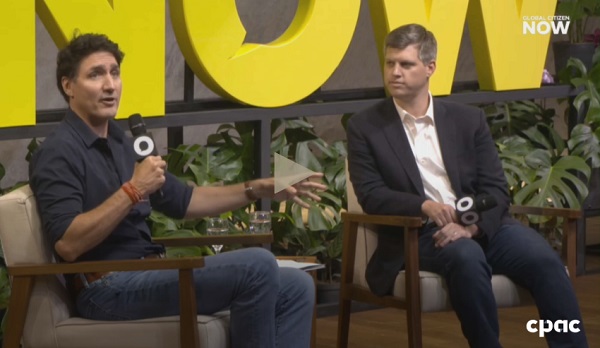
 ESG1 day ago
ESG1 day agoCan’t afford Rent? Groceries for your kids? Trudeau says suck it up and pay the tax!
-
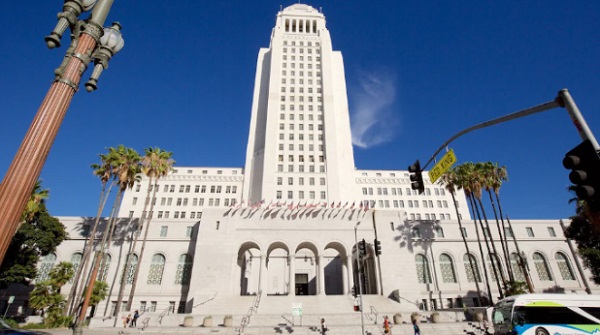
 Daily Caller1 day ago
Daily Caller1 day agoLos Angeles Passes ‘Sanctuary City’ Ordinance In Wake Of Trump’s Deportation Plan
-

 John Stossel1 day ago
John Stossel1 day agoGreen Energy Needs Minerals, Yet America Blocks New Mines
-
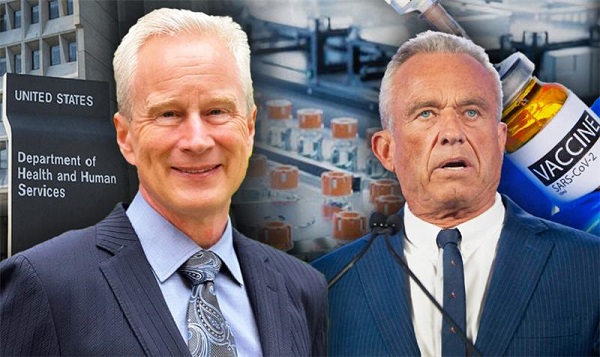
 COVID-192 days ago
COVID-192 days agoDr. McCullough praises RFK Jr., urges him to pull COVID shots from the market
-

 Alberta1 day ago
Alberta1 day agoProvince considering new Red Deer River reservoir east of Red Deer
-

 MAiD2 days ago
MAiD2 days agoOver 40% of people euthanized in Ontario lived in poorest parts of the province: government data



